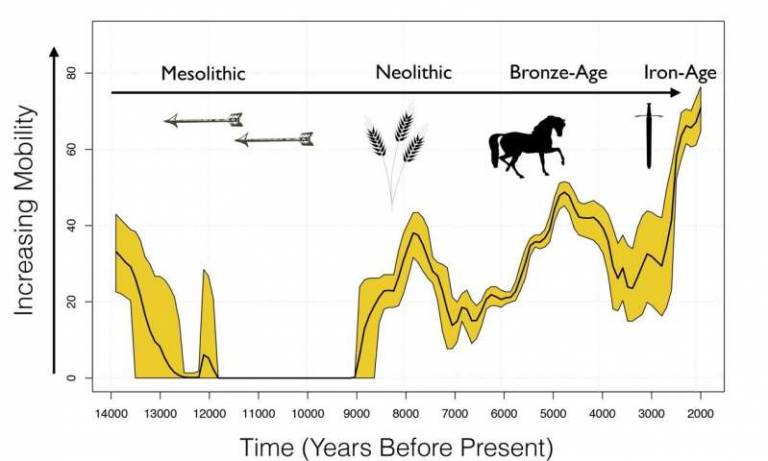Estimating mobility using sparse data: Application to human genetic variation
21 November 2017
Migratory activity is a critical factor in shaping processes of biological and cultural change through time.
 We introduce a method to estimate changes in underlying migratory activity that can be applied to genetic, morphological, or cultural data and is well-suited to samples that are sparsely distributed in space and through time. By applying this method to ancient genome data, we infer a number of changes in human mobility in Western Eurasia, including higher mobility in pre- than post-Last Glacial Maximum hunter-gatherers, and oscillations in Holocene mobility with peaks centering on the Neolithic transition and the beginnings of the Bronze Age and the Late Iron Age. A team of scientists from University College London, including Liisa Loog, Mirna Kovacevic and Mark G. Thomas led to this research.
We introduce a method to estimate changes in underlying migratory activity that can be applied to genetic, morphological, or cultural data and is well-suited to samples that are sparsely distributed in space and through time. By applying this method to ancient genome data, we infer a number of changes in human mobility in Western Eurasia, including higher mobility in pre- than post-Last Glacial Maximum hunter-gatherers, and oscillations in Holocene mobility with peaks centering on the Neolithic transition and the beginnings of the Bronze Age and the Late Iron Age. A team of scientists from University College London, including Liisa Loog, Mirna Kovacevic and Mark G. Thomas led to this research.
UCL press release Here
Estimating mobility using sparse data: Application to human genetic variation
Liisa Loog, Marta Mirazón Lahr, Mirna Kovacevic, Andrea Manica, Anders Eriksson, and Mark G. Thomas
 Close
Close

